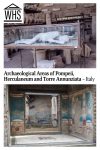Archaeological Areas of Pompeii, Herculaneum and Torre Annunziata
By Jami
What are the Archaeological Areas of Pompeii, Herculaneum and Torre Annunziata?
Mount Vesuvius, a volcano is southern Italy near Naples, erupted suddenly in 79 AD, covering the surrounding area. The speed of the eruption in effect ensured that the surrounding towns were preserved remarkably well under the ash, only to be excavated centuries later. Pompei is the most well-known of the archeological sites, but Herculaneum and Torre Annunziata are nearby sister cities.
Disclosure: This article contains affiliate links. Making a purchase through an affiliate link will mean a small commission for this website. This will not affect your price.
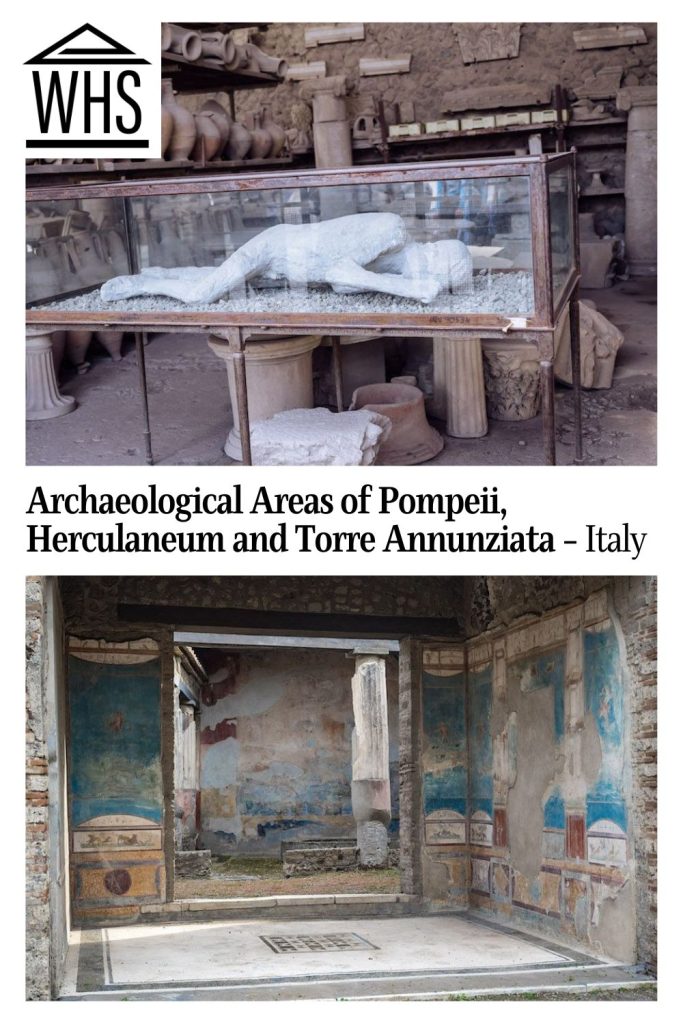
Why are the Archaeological Areas of Pompeii, Herculaneum, and Torre Annunziata a UNESCO World Heritage site?
Pompeii is easily the most visited of the three sites, but all three earn their spot on the UNESCO list. Pompeii was a bustling commercial town and Herculaneum more of a resort town. In Torre Annunziata a modern town has been built, but you’ll find Villa Oplontis there. It provides an example of the lavish lifestyle led by some Romans at the time Mount Vesuvius erupted.
Pompeii and Herculaneum are included on the list because they are whole Roman cities that are remarkably well preserved. The villa in Torre Annunziata has the best preserved Roman wall paintings. All three sites provide an opportunity to get “a full picture of Roman life from the 1st century BC to the 1st century AD through the urban, architectural, decorative and daily life aspects that have been preserved,” according to UNESCO.
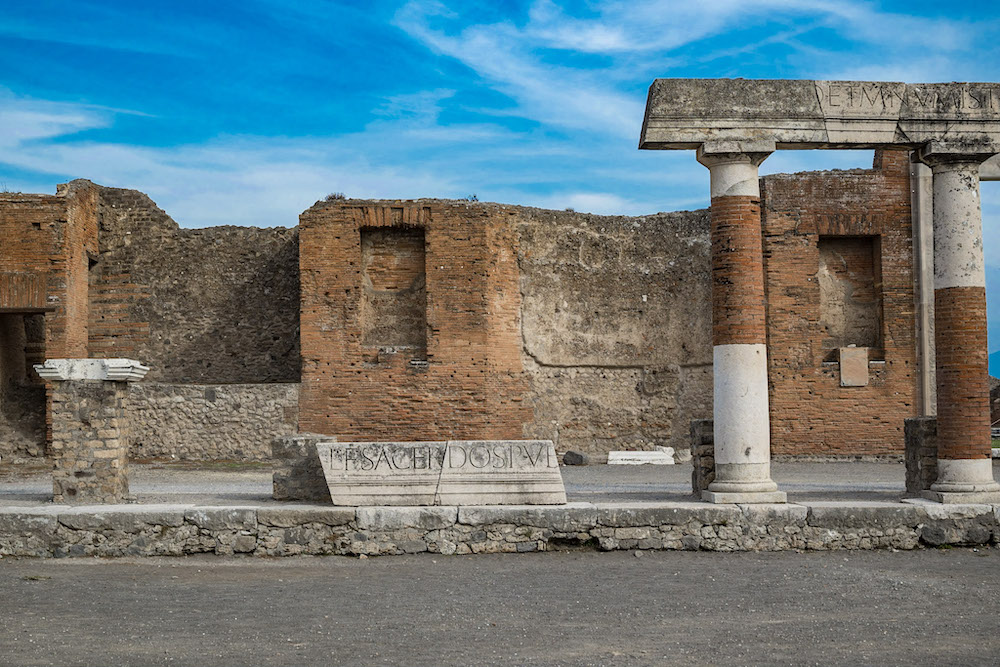
What can you expect on a visit to Pompeii, Herculaneum, and Torre Annunziata?
Pompeii alone is a massive site. If you plan to see all three sites you’ll want to stay in Naples and plan for a marathon few days of sightseeing. That said, many people visit just Pompeii.
Pompeii
In Pompeii, you’ll have the opportunity to get a true picture of Roman life. It’s like a moment was frozen in time and you can imagine it could pop back into a bustling town. The excavated town covers 44 hectares (109 acres), so it was a sizeable city at the time of the eruption. There are public buildings like the Capitolium, the Basilica, temples, bath houses, two theaters and an amphitheater; but also commercial buildings and private residences – some of them quite large and opulent.
Walk the streets of ancient Pompeii. The chariot ruts are still in the cobblestones – the streets were well-paved – and you can hop across using the Roman crosswalks. There was even road construction that halted mid-project when the city was destroyed. It is an eerie reminder that life was interrupted so abruptly.
Enter buildings used as restaurants, homes, storefronts, grain mills, and more. You can see how the wealthy of the city lived and the difference with the rest of the population.
There is so much to see in Pompeii. I left exhausted and amazed both times I visited the city. It’s the closest I’ve ever come to feeling like I’m walking back in time.
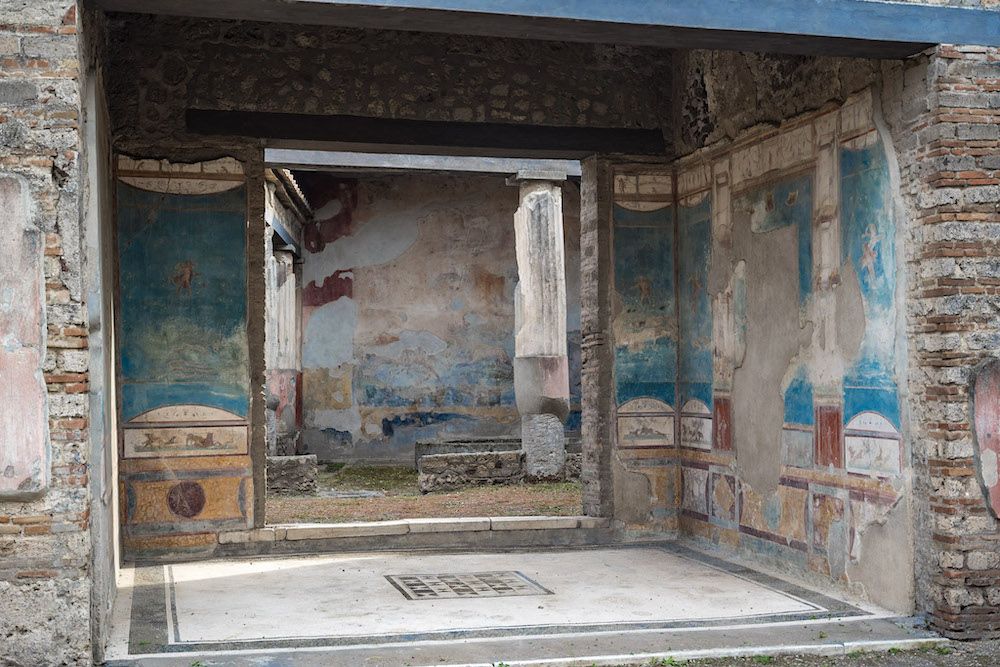
Herculaneum
Because some of the Roman city of Herculaneum lies under the present-day town, only parts are accessible to visitors. You’ll see a smaller site, more well-preserved than Pompeii. There are some frescos and well-preserved tile work in Pompeii but there is more in Herculaneum. It has well-preserved public buildings and, especially interesting for modern-day visitors, complete shops. Some structures even still have their upper floors. Herculaneum is smaller than Pompeii but still gives a glimpse into the lives of the Romans.
Torre Annunziata
Villas outside Pompeii and Herculaneum are included in the UNESCO site, but the two in Torre Annunziata are the best examples of suburban villas. The main attraction is the Villa Oplontis (or Villa A). It’s a lavish home for one of the Roman elites that is quite well preserved. It’s especially prized for its wall paintings. Villa B, on the other hand, is a less opulent. It was used for storage and trading of market goods.
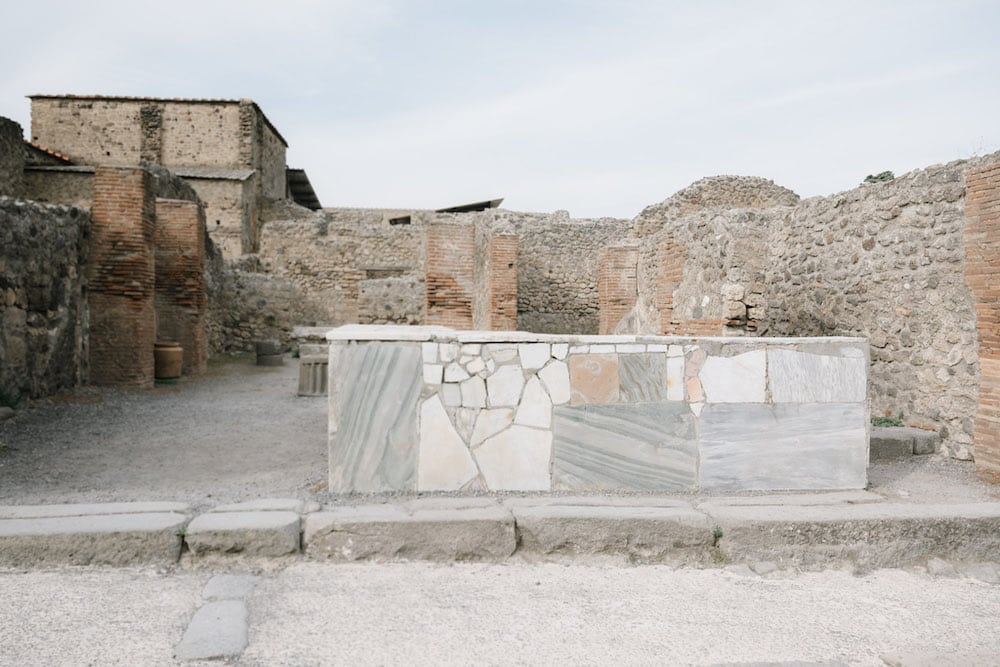
Are Pompeii, Herculaneum, and Torre Annunziata worth visiting?
A resounding yes. There is nothing like these archeological wonders.
That said, it may not be worth it to see all three depending on what your schedule allows. But a visit to at least one of the three sites is a must.
Use the map below to book accommodations in Naples’ historic center:
What sorts of travelers would like Pompeii, Herculaneum, and/or Torre Annunziata?
This is one of those rare UNESCO sites that anyone would enjoy. The sites are eerie and special. It’s impossible to deny how spectacular they are. I don’t say that lightly; Pompeii got my family who was never interested in European travel to cross the Atlantic. They loved it too!

Tips for visiting Pompeii, Herculaneum, and Torre Annunziata
Look at all of the sites and decide your priorities. There is never enough time to do everything. If you have to pick, you can’t go wrong in Pompeii. If you want a shorter day, Herculaneum is a good alternative.
When visiting Pompeii, enter with a plan. There are several downloadable audio guides or you can take a tour with an in-person guide. The site is massive and it’s overwhelming to walk through. There are little details that bring the experience to life, and if you don’t have a guide you’ll miss them.
There are lots of tours available: short tours or all-day tours, just to Pompeii or combined with other sites, private tours or small-group tours. Click on the banner below to see your options:
Pack a lunch with you. There is a cafeteria in Pompeii but the lines are long. There is no cafeteria in Herculaneum.
Bring water and sun protection. There is very little shade to be found when you’re exploring the ruins.
Wear comfortable shoes. Not only are you going to walk on cobblestones but they’re old cobblestones.
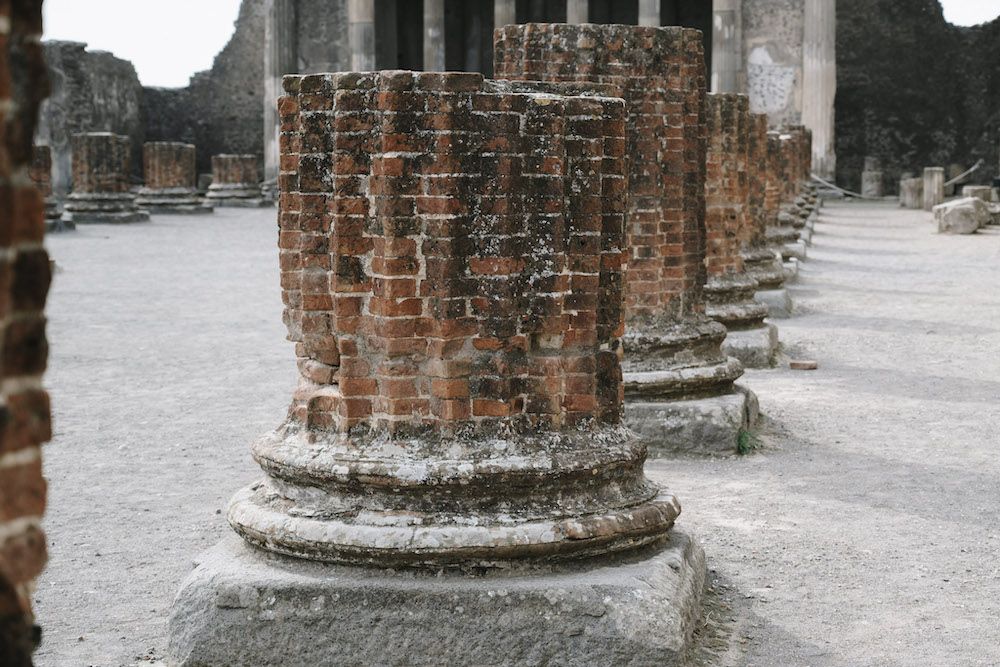
Chances are you’ll spend some time in Naples on your visit. Make sure to visit the elements of its UNESCO site in Naples’ historic center. To the south is another: the Amalfi Coast.
Where is Pompeii, Herculaneum, and Torre Annunziata?
These archeological sites are all near Naples.
- Pompei is a modern city. Pompei Scavi are the ruins you’re looking for: Viale delle Ginestre, 80045 Pompei NA, Italy
- Herculaneum: Corso Resina, 187, 80056 Ercolano NA, Italy
- Torre Annunziata – Villa Oplontis: Via Sepolcri, 80058 Torre Annunziata NA, Italy
By car: All three sites are within 45 minutes of Naples, connected by the E45 highway. To visit all three from Naples, start with Herculaneum, then Torre Annunziata, while Pompeii would need a full day.
There is no parking at the sites. Use the public parking spots or a paid parking lot.
There is also a bus that connects the different sites.
By public transportation:
- To get to Pompei Scavi, take the Circumvesuviana L1 train to Pompei Scavi. It’s a 45-minute ride.
- Herculaneum is at the Ercolano Scavi stop on the same line. It’s a 27-minute ride to Herculaneum.
- For Torre Annunziata take the MET train toward Sorrento and get off at Torre Annunziata Centrale.
Pompeii can be visited as a day trip from Rome if you’re not staying in Naples or on the Amalfi Coast. It’s a long day but it’s worth it.
For more information about the Archeological Park of Pompeii, opening hours, and admission fees, as well as Villa Oplontis, see the official website. Here is the official website for Herculaneum (only in Italian – use Google Translate).
Have you been to Pompeii, Herculaneum and/or Torre Annunziata? If so, do you have any additional information or advice about this UNESCO World Heritage site? Please add your comments below!

